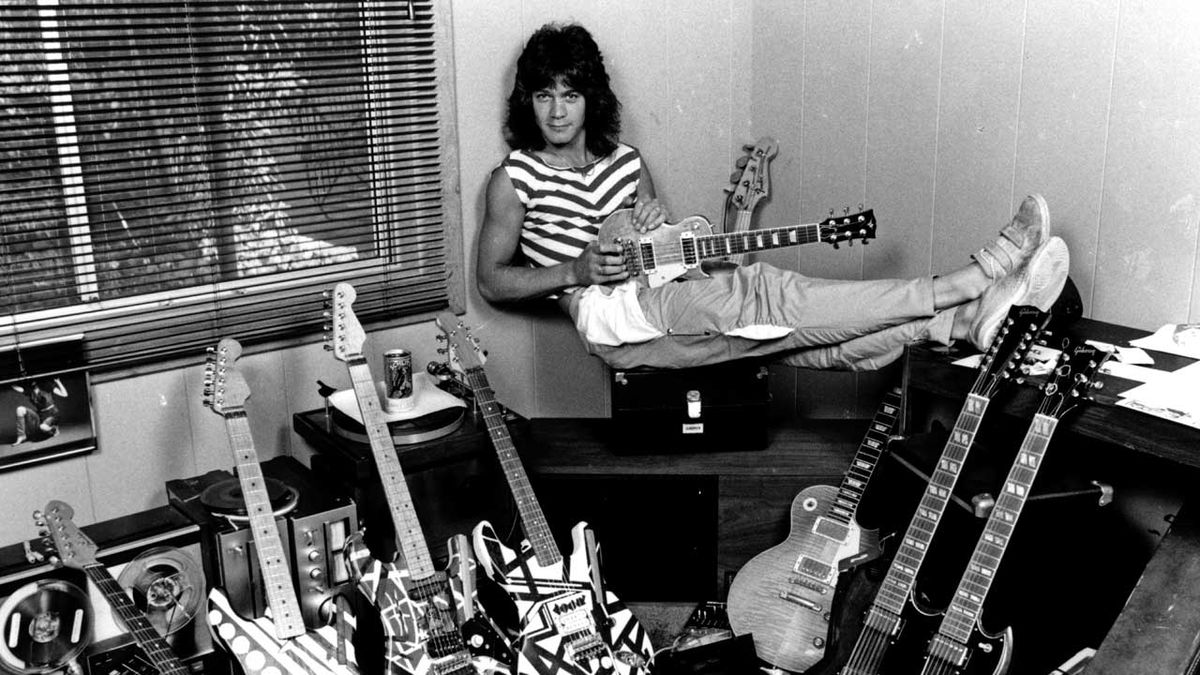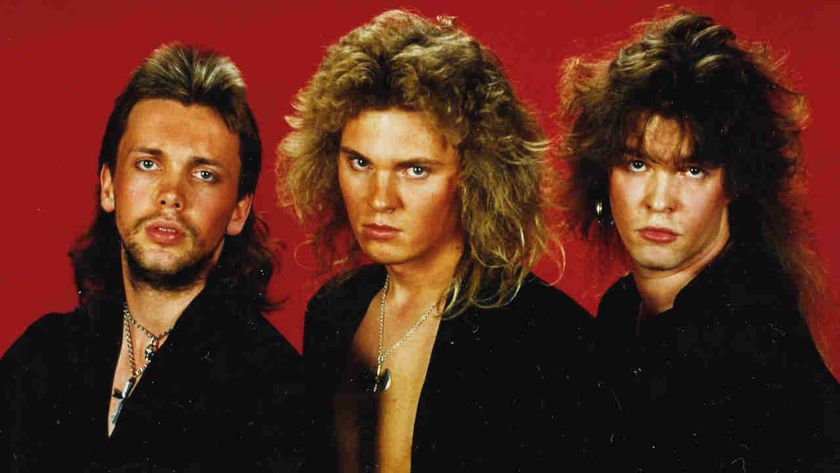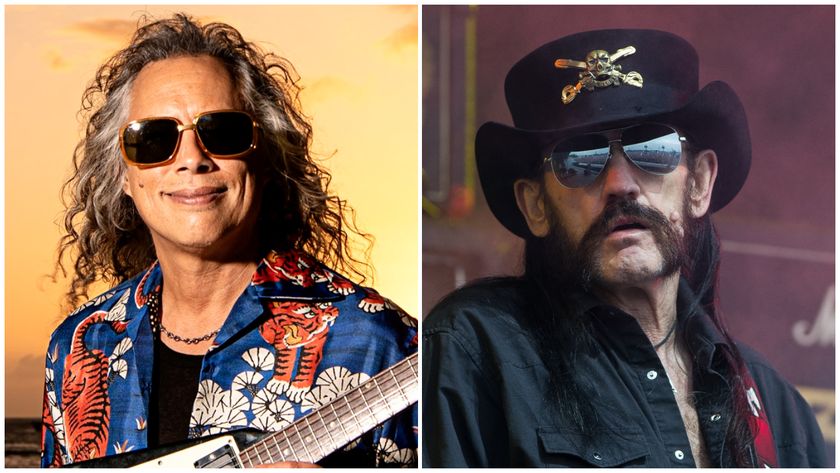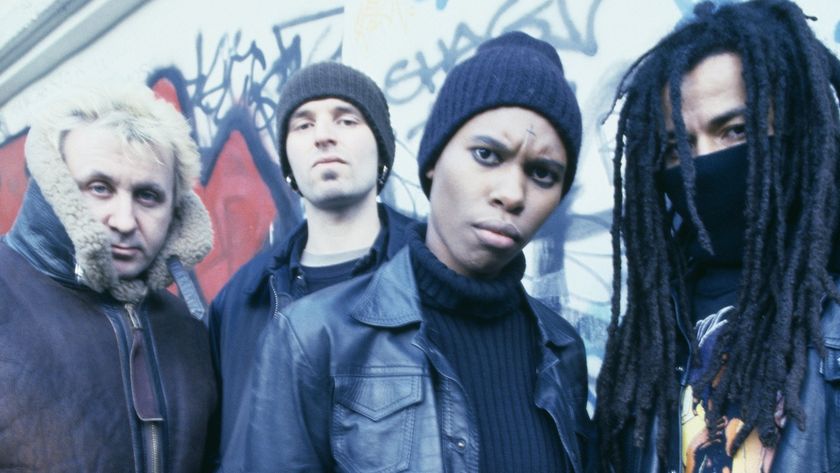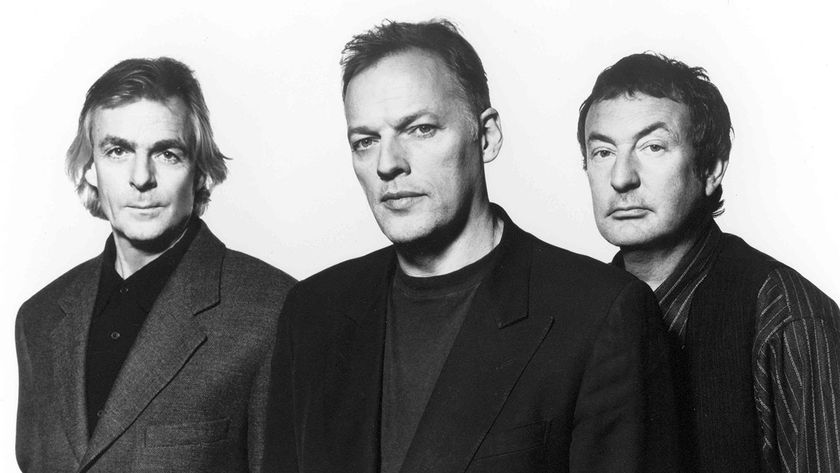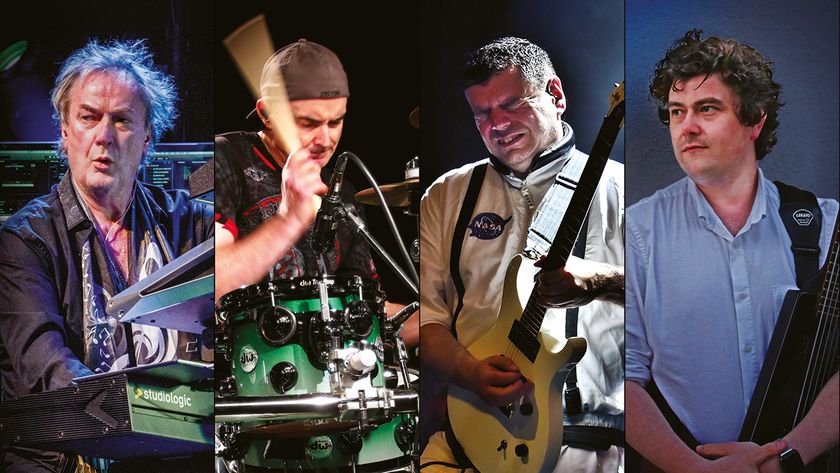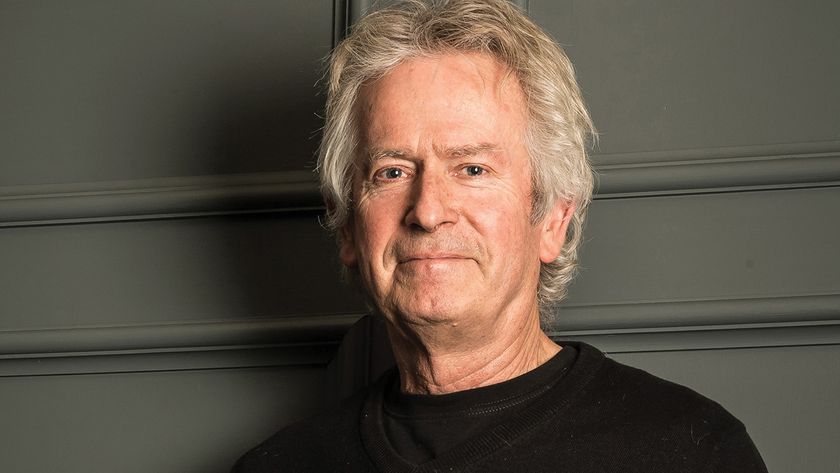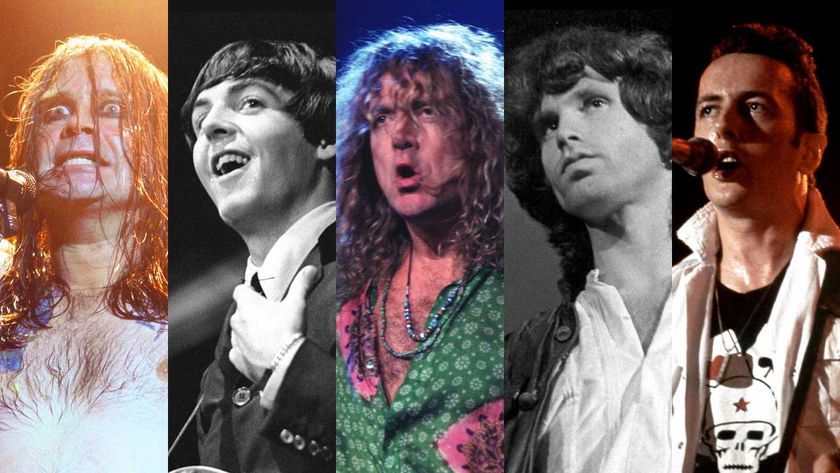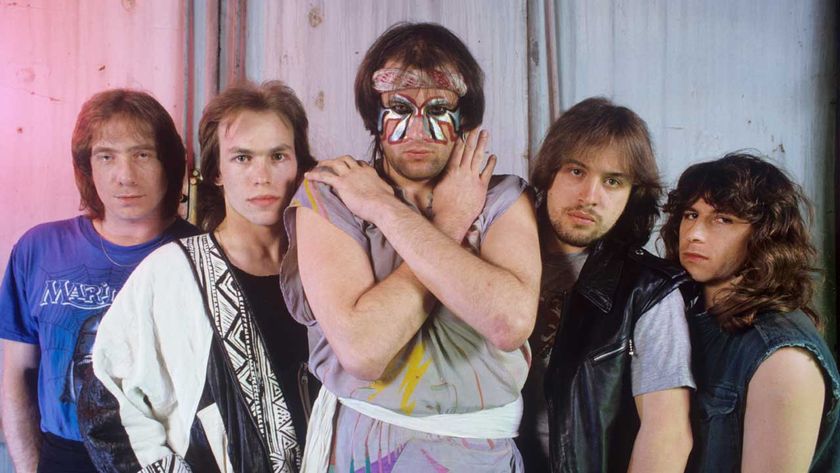Eddie Van Halen was a game-changer, a tone-chaser, a riff machine, songwriter, composer, an avant-garde artist who picked up the guitar where Jimi Hendrix left it, and ran with it like a quarterback into the future.
To discuss the guy’s music, you only need to start at the beginning – track one of Van Halen’s 1978 self-titled debut album. Right before the crunching riff of Runnin’ With The Devil comes in, the very first guitar noise sounds like the plink of keys on an impossibly high piano. But that’s Eddie raking his plectrum across the strings on the wrong side of his guitar’s nut – the no man’s land between the tuning pegs and the neck’s first fret. It’s a subtle, bold move that speaks to his experimental heart.
Throughout his career there was always an aural sound effect like this up his sleeve – that almost hiphop like record scratch at the start of Atomic Punk, the echoing, violin-like swells of Cathedral, or the electric drill motor pumped through his guitar pickups on Poundcake. There was always something, an idea, a sonic detail.

Eddie’s wide palette of guitar tropes became a Rock Guitar 101 lesson for the legions of players who followed him. Like Hendrix, many of his extended licks and tricks were highly unconventional at the time, but have since been copied so closely as to have become the new orthodoxy. Eruption rewired the brain of every budding guitarist who heard it. The second tune on the debut album, it was the sound of somebody redefining the art of rock guitar, the piece’s one minute-and-40-second runtime presenting a towering storehouse of techniques that he would draw on and expand upon for the rest of his life.
Steve Hackett, Billy Gibbons and Brian May were just some of the rock guitar players who had ‘tapped’ before – playing melodies by fretting notes on the neck with the fingers of their picking/ strumming hand. But Eddie strapped two turbo engines either side of the concept and shot for the moon. In his nimble hands the technique created whole new possibilities, in terms of the note intervals that could be achieved on the guitar, and the speed at which they could be delivered.
Like Hendrix and Ritchie Blackmore, Eddie employed his guitar’s tremolo arm/whammy bar with alacrity, using it either to add a gentle, vocal-like vibrato to his notes, but often and more strikingly hitting his low strings and pushing the bar into the guitar body to get that descending, stomach-lurching ‘divebomb’ effect.
A left hander, Eddie could accomplish more with his fretting hand alone than most of his peers – hammering on and pulling off – but he also had what Joe Satriani once described to me as ‘The Right Hand Of Doom’. The speed and precision with which he could pick notes could be dizzying and this ‘tremolo picking’ technique was yet another signature move, as on his genre-defying turn on Michael Jackson’s Beat It.
As the stage foil for one of the all-time great showmen, David Lee Roth, Eddie needed to grab people’s attention somehow. As countless shots of him playing live show, he could deliver all these killer chops with a cheeky grin, often mid-star jump, and frequently in balloon pants. Yet all these creative tics would be gimmicks if it weren’t for his innate sense of melody, his sheer musicality, and also his rare commitment to his craft.
A self-professed tone-chaser, he was always modifying his gear to get the sound in his head. The crowning example of this is his classic ‘Frankenstrat’. In around 1973, he dug out a Strat body from a pile of seconds at Charvel California factory, bought a cheap neck, and wired in a fat humbucker pickup more usually found in a Gibson, spraying it black and white on the spur of the moment. His trademark guitar was born.
Always coming from a fresh angle, he took the same approach to his amplifiers while questing for his dream sound – warm, sustained, defined. He’d ride his Marshalls hard, whacking everything up to maximum, often taping sound insulation foam over the speaker cabinet at club gigs so he could elicit all those rich mid and low frequencies, but without the treble tearing the eardrums from the kids in the front row.
A tinkerer to the last, Eddie’s sound would evolve over the years. The guitars and amps would change, often in collaboration with high-end manufacturers, but there’s real rock’n’roll romance in the thought of him hunkered down in his shed at home in Pasadena, hammer, drill and transformers in hand, shaping the tone that would influence a generation.
And what a tone it was. The band’s steam train take on You Really Got Me, the spiky-yetmellow funk chops of Jamie’s Cryin’; the flanging, sledgehammer riff of fan-favourite Unchained, and latter-day works like She’s The Woman from A Different Kind Of Truth – these were all delivered with such natural groove and instinctive feel.
But the lead guitar fireworks have often overshadowed the sheer nuance and dynamics of his rhythm playing, enhanced in the band by his incredible sibling simpatico with drummer brother Alex Van Halen. Right from the off with Runnin’ With The Devil, on to Somebody Get Me A Doctor, Romeo Delight and Panama, Eddie colours the songs with guitar riffs that hit you over the head one minute, roll back to something gentler the next, all with some spicy sauce oozing between the gaps.
Ted Nugent once said that for rock to really be rock’n’roll, you had to be able to “hear the Chuck” in it. And for all Eddie’s formidable technique and flow there was always a dangerous, fluffs-n’-all looseness to it that Nugent, and Berry himself, might’ve appreciated, the sheer force of his musical personality overriding any prim sense of clinical accuracy.
Indeed, one of the elements many of Eddie’s copyists struggle with is the bluesy feel and swing he brings to the riffs. In lockstep with brother Alex and the ever-undersung bassist Michael Anthony, the guitarist’s in full flight on the hyper-boogie of Bottoms Up! and Sinner’s Swing, the slinky rock of Drop Dead Legs, the twanging country licks of Finish What Ya Started. Throw a stick at their catalogue and you’ll hit a great example.
And just check out these song titles flying by us! All the guitar flair in the world would have been for nothing without Van Halen’s rock-solid repertoire, and while the band diplomatically shared writing credits between all members, Eddie did much of the heavy musical lifting. Switching to synth for 1984 (in spite of much scepticism from band and label) he went and came up with Jump, their biggest hit, the one your auntie knows, and a serious contender for the best-known synth hook in pop/rock history.
Into the later 80s and the Van Hagar period, the hit singles just kept coming: Why Can’t This Be Love, Love Walks In, When It’s Love, Can’t Stop Lovin’ You. Power ballads were in, but by the 90s the scope of the Van Halen canon was broad enough to take it. Their song list encompassed soft pop, hard rock, along with dalliances into flamenco (Spanish Fly), funkdisco (Push Comes To Shove), even experimental noise rock (Sunday Afternoon In The Park, Intruder), not to mention Diver Down’s oblique versions of beloved 60s tunes Oh, Pretty Woman and Dancing In The Street.
The personality collision of Eddie Van Halen and David Lee Roth was probably no surprise, but for some die-hard fans the sadder schism that occurred in the band’s later years was that between Eddie and Michael Anthony. Their musical chemistry was extraordinary and nowhere more so than in their vocal harmonies, another key hallmark of the band’s golden-age sound. Think of their deceptively tricky, helium-high interaction on Runnin’ With The Devil, the close West Coast harmonies of In A Simple Rhyme (closing out Women And Children First, gorgeously).
But whatever the reasons for Anthony’s eventual departure, at the peak of the band’s powers Van Halen was a brilliant unit comprising top players performing golden songs. And Eddie Van Halen was at the heart of it, with that grin, making the near-impossible look easy, and fun.
You just have to look at the calibre of artists to paid tribute to him in the wake of his death (from Quincy Jones to Angus Young) – and the fact that social media became alight with heartbroken fans when the news broke out – to get the sense that he touched a lot of lives, and inspired a lot of people.
All the clichés and grandiose statements were justified. And while his status as a guitar legend was assured decades ago, let’s not forget just what an artist and craftsman he was, and the music that he wrote, and the sterling company he kept. By all these markers and more, Eddie Van Halen was a genius.
